#bodywork
Text
By Joanne Silberner
April 8, 2024
A hug, a handshake, a therapeutic massage. A newborn lying on a mother’s bare chest.
Physical touch can buoy well-being and lessen pain, depression and anxiety, according to a large new analysis of published research released on Monday in the journal Nature Human Behaviour.
Researchers from Germany and the Netherlands systematically reviewed years of research on touch, strokes, hugs and rubs. They also combined data from 137 studies, which included nearly 13,000 adults, children and infants. Each study compared individuals who had been physically touched in some way over the course of an experiment — or had touched an object like a fuzzy stuffed toy — to similar individuals who had not.
For example, one study showed that daily 20-minute gentle massages for six weeks in older people with dementia decreased aggressiveness and reduced the levels of a stress marker in the blood. Another found that massages boosted the mood of breast cancer patients. One study even showed that healthy young adults who caressed a robotic baby seal were happier, and felt less pain from a mild heat stimulus, than those who read an article about an astronomer.
Positive effects were particularly noticeable in premature babies, who “massively improve” with skin-to-skin contact, said Frédéric Michon, a researcher at the Netherlands Institute for Neuroscience and one of the study’s authors.
“There have been a lot of claims that touch is good, touch is healthy, touch is something that we all need,” said Rebecca Boehme, a neuroscientist at Linkoping University in Sweden, who reviewed the study for the journal. “But actually, nobody had looked at it from this broad, bird’s eye perspective.”
The analysis revealed some interesting and sometimes mysterious patterns. Among adults, sick people showed greater mental health benefits from touch than healthy people did. Who was doing the touching — a familiar person or a health care worker — didn’t matter. But the source of the touch did matter to newborns.
“One very intriguing finding that needs further support is that newborn babies benefit more from their parents’ touch than from a stranger’s touch,” said Ville Harjunen, a researcher at the University of Helsinki in Finland, who also reviewed the study for the journal. Babies’ preference for their parents could be related to smell, he speculated, or to the differences in the way parents hold them.
Women seem to benefit more from touch than men, which may be a cultural effect, Dr. Michon said. The frequency of the touch also mattered: A massage once every two years isn’t going to do much.
Several studies included in the review looked at what happened during the height of the Covid pandemic, when people were isolated and had less physical contact with others. “They found correlations during Covid times between touch deprivation and health aspects like depression and anxiety,” Dr. Michon said.
Touching the head appears to have more of a beneficial effect than touching the torso, some studies found. Dr. Michon couldn’t explain that finding, but thought it could have to do with the greater number of nerve endings on the face and scalp.
Another mystery: Studies of people in South America tended to show stronger health benefits of touch than did those studies that looked at people in North America or Europe. Dr. Michon said that culture may somehow play a role. But Dr. Boehme said the studies showing the differences between countries were too small to be definitive. “I think the mechanism behind this is biological,” she said. “I think that’s hard-wired and will be the same for all of us.”
In 2023, Jeeva Sankar, a pediatrics researcher at All India Institute of Medical Sciences, and a colleague published a rigorous review of skin-to-skin care for newborns. The analysis concluded that touch therapy for preterm or low-birth-weight infants should start as soon as possible and last eight hours or more, a recommendation that the World Health Organization adopted. Dr. Sankar said the new review was important because touch is often neglected in modern medical care, but it was too broad. He would have liked it to focus more on how various forms of touch could be integrated in medical care.
Dr. Michon stressed that the types of touch considered in these studies were positive experiences to which the volunteers agreed. “If someone doesn’t feel a touch as being pleasant, it’s likely going to stress them out,” he said.
A version of this article appears in print on April 9, 2024, Section A, Page 4 of the New York edition with the headline: Reviewing Studies, Scientists Find Hugs Are Good for You.
31 notes
·
View notes
Text
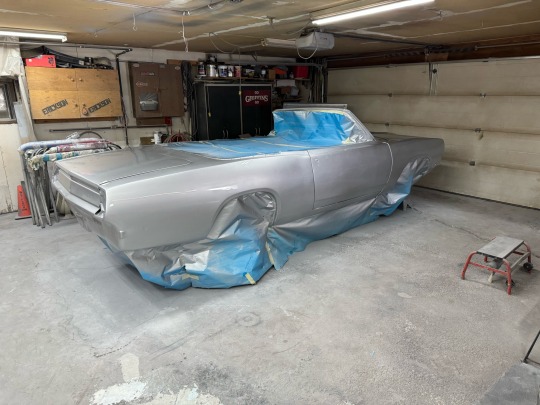
She’s got paint
#awesome#classic#restoration#velocity#itswhatido#fast cars#bodywork#welding#fabrication#painting#do it right#plymouth barracuda#convertable#rare
20 notes
·
View notes
Text


The skin is an organ that can influence body homeostasis. It is good practice, when evaluating the clinical picture of a patient, to always ascertain the presence of scars. Looking at the patient as a system and not just as a symptom or a symptomatological segment will help the clinician, and all those professionals who use manual techniques, to find a more effective treatment. A scar can produce different symptoms, which can affect the neurological sphere, the fascial, and the visceral area. The skin surface is a means to communicate with the nervous system, to understand it, and to give therapeutic information. We can conclude by affirming that the skin and the fascias represent the skeletal system of the nervous system.
#bodywork#Structural integration Atlanta#Body Alive#scars#healing#physiology#fascia#connective tissue#massage therapy#the skin#nervous system
11 notes
·
View notes
Photo
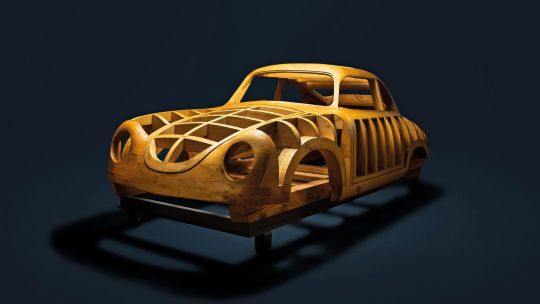
Porsche 356 woodframe !
Porsche's first sports cars had aluminum body panels, but it was nature's own lightweight material that made their iconic shape possible.
The Porsche 356 had bodywork that where the panels were hammered and hand rolled into shape, and a wooden frame model was used to ensure everything lined up.
That frame still exists, and is in relatively good condition. It's at the Porsche Automuseum in Gmünd, Austria, where the first Porsche production cars were completed before manufacturing moved to Stuttgart, Germany.
The frame is sometimes called Holzklopfmodell, which is German for "hammered wooden frame," but the frame itself wasn't hammered. Rather, it served as a model the factory workers used for shaping and fitting of the aluminum body panels. It was a time-consuming process that sometimes required multiple attempts to get a door or fender to perfectly fit the frame, which was the exact shape of a 356 body. The process took at least 90 hours, according to Porsche.
Handmade bodywork was primarily a feature of the earliest Austrian-built Porsches. Starting in 1948, Porsche built 52 cars in Gmünd, including 44 coupes and eight convertibles, plus between eight and 10 super light (SL) bodies that were completed by Porsche's racing department in Stuttgart between 1951 and 1952.
When production shifted to Germany in 1949, Porsche switched to steel bodies and mechanized manufacturing processes, leaving hand-formed aluminum for specials like the 16 lightweight 356 America Roadsters. A new wooden frame eventually replaced the original.
Because steel is much harder than aluminum, Porsche started using presses to manufacture body panels, which also allowed it to produce cars at a faster rate. Today, the 356 wood frame remains as a reminder of the automaker's early days.
Word: Stephen Edelstein
#art#design#sportcars#sportcar#luxurycars#luxurycar#luxurylifestyle#porsche#porsche 356#bodywork#millwork#carpentrywork#handmade#austria#history
44 notes
·
View notes
Text

Felipe Pantone / Alpine / A110 / Bodywork / Painting / 2021
5 notes
·
View notes
Text
Tricep Dumbbell Workout
Put some size and definition into your Triceps with these moves using dumbbells only! 💯
Complete 10-20 Reps of each.
⚒️ Skullcrusher
⚒️Triceps Dumbbell Floor Press
⚒️ Double Overhead Press
⚒️Standing Dumbbell Triceps Extension
⚒️Push Ups
youtube
#workout#fitness#bodybuilding#bodywork#sports#triceps#biceps#big arms#shorts#gym#muscle#exercise#exercices#training#body goals#sportfitness#sport news#sportlive#health#transformation#Youtube
63 notes
·
View notes
Text
sorry i haven’t been active or updating for a few weeks, i’ve had end of term exams and a shit ton of deadlines but my christmas break starts next week so expect some more bodywork chapters coming within that time!!
2 notes
·
View notes
Photo
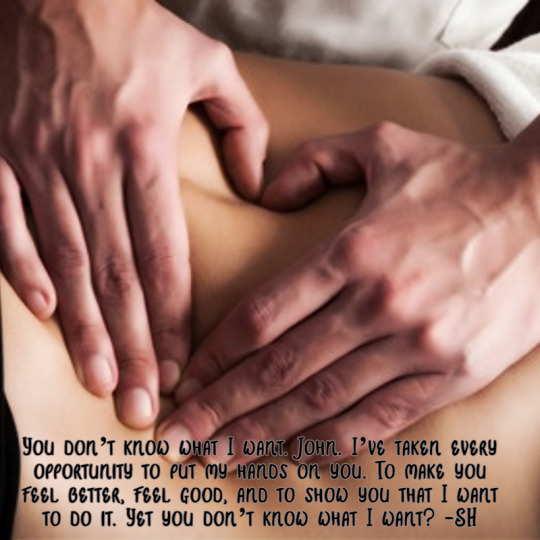
Bodywork by Silvergirl
Johnlock Love Letters #2273
Five times John became unbearably aroused while being massaged, and one time he absolutely didn't, which was all he needed to know.
#JL3#Johnlockloveletters#Johnlock#love letter#Bodywork#Silvergirl#5+1#5+1 things#5+1 fic#massage#friends to lovers#touch#intimacy#POV John#<5k
68 notes
·
View notes
Text





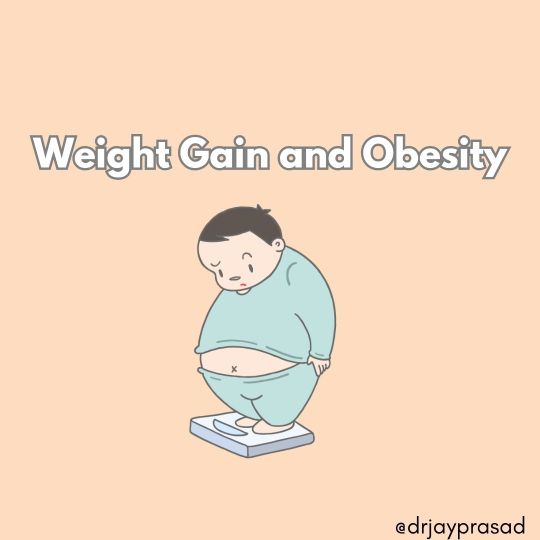


Lack of Sleep Effects on the Mind & Body
- 😴 Effects on the Mind:
1. Cognitive Impairment:
- Memory: Lack of sleep affects short-term and long-term memory.
- Attention and Concentration: Sleep deprivation hinders focus and decision-making.
2. Mood Changes:
- Irritability and Mood Swings: Sleep-deprived individuals experience increased irritability.
- Increased Stress: Lack of sleep elevates stress levels.
3. Emotional Regulation:
- Emotional Instability: Sleep loss compromises emotional regulation.
4. Reduced Creativity and Problem-Solving Skills:
- Lack of sleep impedes creative thinking and problem-solving.
5. Impaired Judgment:
- Sleep deprivation impairs judgment and decision-making.
6. Hallucinations:
- Extreme sleep deprivation can lead to hallucinations.
7. Risk of Mental Health Issues:
- Chronic sleep deprivation increases the risk of depression and anxiety.
- 🛌 Effects on the Body:
1. Weakened Immune System:
- Chronic sleep deprivation weakens the immune system.
2. Increased Risk of Chronic Conditions:
- Obesity, diabetes, and cardiovascular diseases are linked to insufficient sleep.
3. Hormonal Imbalances:
- Sleep regulates hormones controlling appetite, stress, and growth.
4. Impaired Physical Performance:
- Lack of sleep decreases athletic performance and coordination.
5. Elevated Blood Pressure:
- Sleep deprivation is associated with increased blood pressure.
6. Impaired Metabolism:
- Insufficient sleep disrupts glucose metabolism, contributing to insulin resistance.
7. Increased Inflammation:
- Lack of sleep contributes to chronic inflammation.
8. Altered Pain Perception:
- Sleep deprivation lowers pain threshold and increases pain perception.
- ⏰ Long-Term Consequences:
- Persistent sleep deprivation can lead to severe mental and physical health problems.
- Prioritizing sleep is crucial for overall well-being.
- Seeking guidance from healthcare professionals is advisable for persistent sleep difficulties.
#mentalhealth #psychology #ocd #drjayprasad #hypnotherapist #healer #selfcare #selflove #trending #peace #mindset #bodybuilding #soul #subconsciousmind #programming #mentalhealthissues #happy #curementalhealth #drjayhypnotist #jayprasad #nhroindia #nhroind #humanrights #happiness #sleep #india #psychologist #hypnotist #drjayhypnotist #cure #mentalhealthawareness
#psychology#motivation#mental health#ocd#hypnotherapy#mindfulness#cure mental health#cure ocd#drjayprasad#drjayhypnotist#drjay#mantra#trance#bodywork#trending#shortvideo#viral video#viralshorts#trendingnow#viral#life quotes#life#inspirational#motivational#MindMagic#mind magic
4 notes
·
View notes
Text

#wimhoff#poland#training#fullyin#bytafari#bodywork#morningroutine#hoffer#let it go#cold is your friend#amazing experience
2 notes
·
View notes
Text

Success Treating Migraine -- How to Treat it
A client came in whom I've worked with a lot. Her spine has many twists and turns from multiple falls being an equestrian for 25 years. At this point, in her 60's she's experiencing a lack of energy and general difficulty putting on muscle. Migraines are part of the picture.
I've worked with her sub-occipital rotators before but they haven't stayed corrected. The migraines are less frequent but not gone. What else am I missing? Clients who present with complex problems are my favorite these days because they make me think and learn new things. Sometimes I have to relearn something....
A major area of instability in many people's spine is at the base of the rib cage where the lumbar spine is vulnerable to torque injuries. A left torque will create weakness down the medial side of the opposite leg and up into the back of the opposite shoulder and also inhibit the ability to twist the spine to the right. Often this will be accompanied by an inability to get the 'push reflex' to work through the left leg. All these events are predictable and repeatable. If you don't correct that fundamental torque, the problems will recur.
The work the client does at home is crucial.
I corrected the sub-occipitals then had my client fire off the left lumbar preferred rotation. I then rechecked the neck and the correction I had done minutes ago was gone. I released the left lumbar at the T12, L1 junction, training the spine to be able to rotate right without using the left back extensors to push it. (Yes, your back extensors will get active in rotation if your rotators don't work.) After releasing the left QL and Extensors at T12/L1 I retested the sub-occipitals and they were testing strong. I ran the same tests twice through to double check. Yup, doing fine.
I saw that client again today. I ask how the Migraines were since our new discovery. SHE HADN'T HAD A MIGRAINE IN FOUR MONTHS. Miracle! When I retested the left lumbar rotations to the sub-occipitals no errors occurred in the firing patterns. No muscles 'switched off', a term used for muscles that fail to respond reliably when muscle tested.
For those of you who know muscle testing, you can test the preferred lumbar rotation against the cervical rotations and release the lumbar to correct the cervical inhibitions. Pictured here are 2 of the major players in lumbar rotation: QL and Serratus Posterior Inferior SPI, (a very important player which opposes the full expansion of the back of the diaphragm. Frequently locked short following past falls which ‘knocked your breath out’). These short tight muscles end up inhibiting the sub-occipitals on the opposite side.
A major area of instability in many people's spine is at the base of the rib cage where the lumbar spine is vulnerable to torque injuries. A left torque will create weakness down the medial side of the opposite leg and up into the back of the opposite shoulder and also inhibit the ability to twist the spine to the right. Often this will be accompanied by an inability to get the 'push reflex' to work through the left leg. All these events are predictable and repeatable. If you don't correct that fundamental torque, the problems will recur. If you don't address the secondary relationship between suboccipital torque and Thoraco/Lumbar torque, the problems will recur.
What is the role of Serratus Posterior Inferior? I looked up an image of it. It's a lot more superficial than I thought.
This lovely strong muscle the Serratus Posterior Inferior ties our lowest ribs to our spine. When you take a blow to your back and get the ‘wind knocked out of you’ this muscle contracts and frequently doesn’t let go. SPI is superficial compared to the QL, another prime suspect for being ‘frozen’ tight = always a culprit when someone’s ‘back went out’, along with the Quadratus Lumborum on that same side.
Jocelyn Olivier :: Founder :: Neuromuscular Reprogramming
#NMR#Neuromuscular Reprogramming#Jocelyn Olivier#bodywork#migraines#massage therapy#Body Alive#pain patterns
9 notes
·
View notes
Text

1968 convertible
#plymouth barracuda#restoration#awesome#classic#fabrication#fast cars#itswhatido#bodywork#welding#painting#mechanic#rare#convertable
16 notes
·
View notes
Text
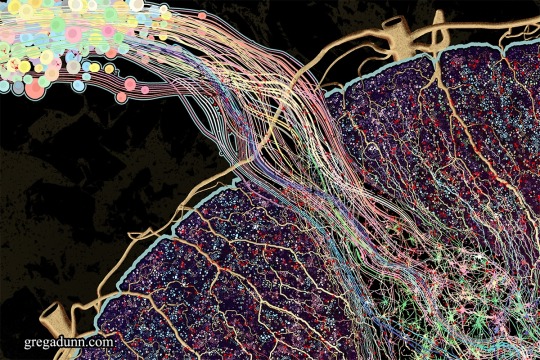

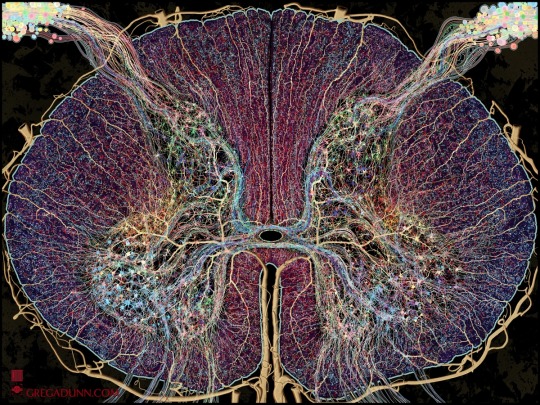

[Greg Dunn Neuro Art]
After a year's work here it is, the new piece Spinal Cord!
The spinal cord is the information superhighway connecting our brains to our bodies, an indispensible organ and masterpiece of evolution as fundamental to our existence as our brains themselves.
It is available as:
1. Fine Art Prints (pictured here)
2. Microetched Prints (I'll post more about these soon, these animate the neural activity of this region)
3. Gold Microetchings (also have reflective animations, highest end option)
This image was made entirely from scratch, deeply informed by the neuroscientific literature and my background in neuroscience and designed to be an attractive piece of fine art as well as an accurate atlas of both anatomy and connectivity. It is the most ambitious project that I’ve undertaken since the creation of Self Reflected.
This artwork and associated images, GIFs, and video are designed to give the viewer a comprehensive understanding of the complex anatomical details of this region and how information travels through the cord. In particular, I wanted to emphasize the complexity of the transverse white matter regions and how signals travel into and out of these areas. Information travels through the afferent inputs in the dorsal ganglia, is processed in the butterfly shaped gray matter regions in the central cord, and through computations with interneurons and afferent/efferent signals from adjacent regions of the transverse white matter tracts leads to signal outputs through the ventral cord that execute movements.
* * * *
This could be enough for me or you today, place your hand on another and melt it on, every square millimeter of your hand relishing contact, fingers as hoses of energy, filling the room with the other, and the horizon.
Alan Bowers
#anatomical#spine#spinal cord#neuroscience#mind#brain#anatomy#nervous system#anatomical art#Alan Bowers#quotes#bodywork#energy#touch
16 notes
·
View notes
Text

The view 🥰
8 notes
·
View notes
Text
I introduced a new massage at my studio. Im working along with my bff on giving 4 hand massages to clients. It's for balancing, grounding, and calming. Im very excited and are the people receiving the massages.
8 notes
·
View notes
